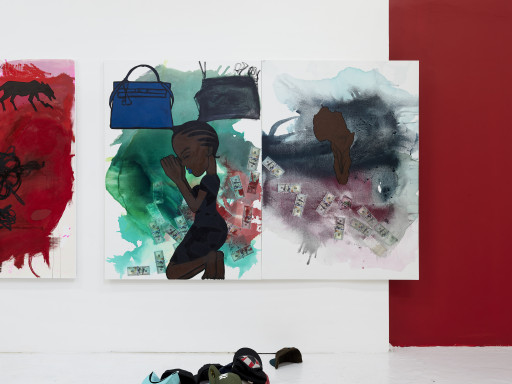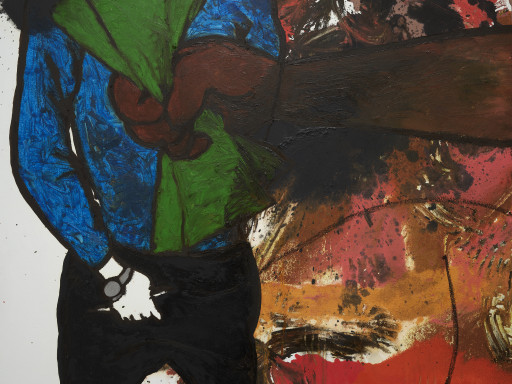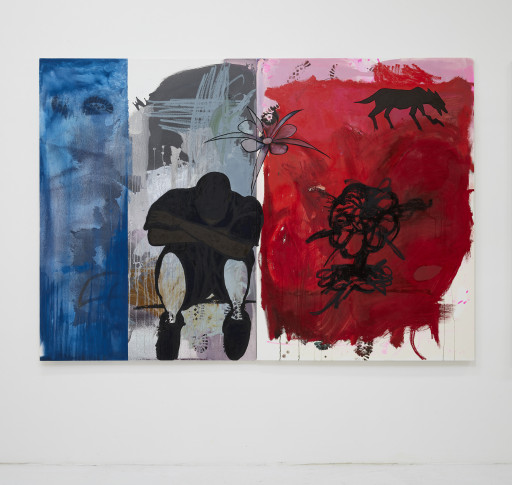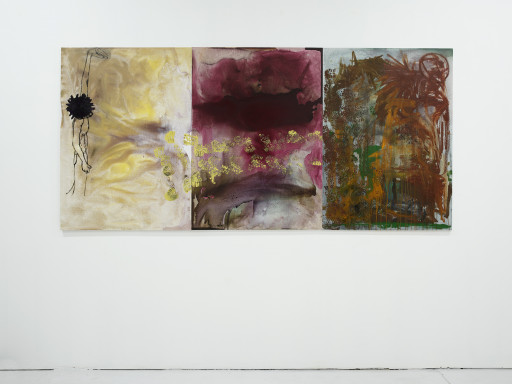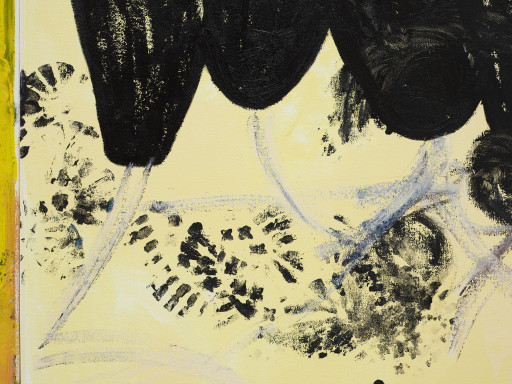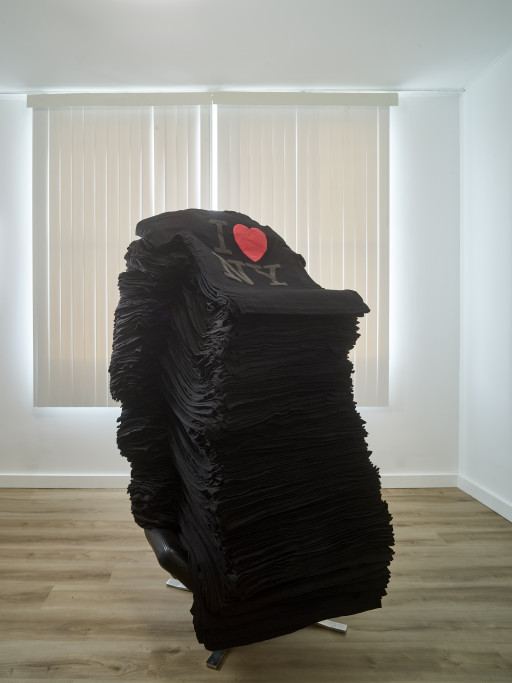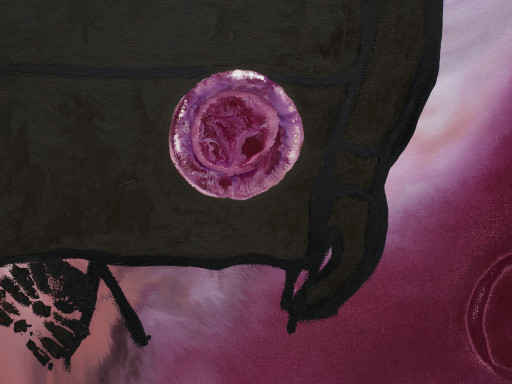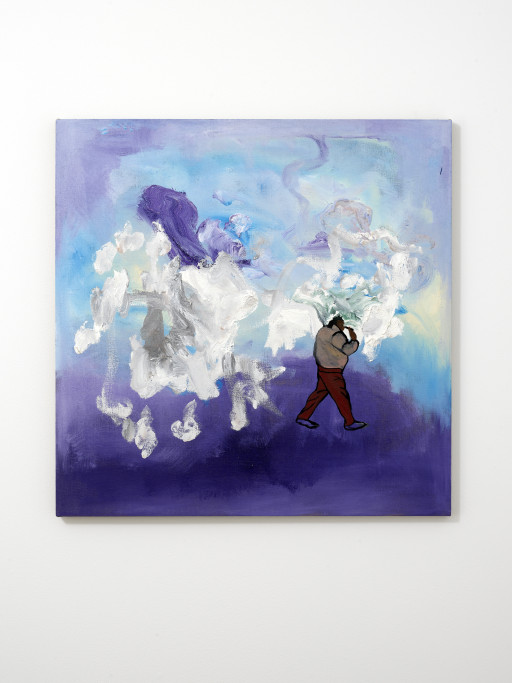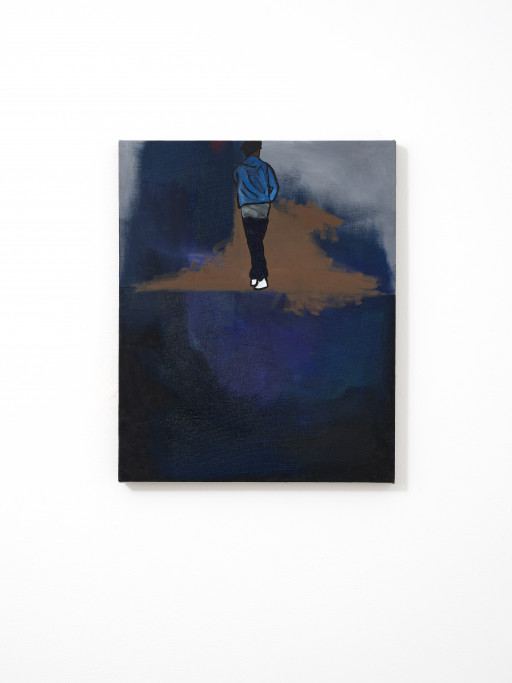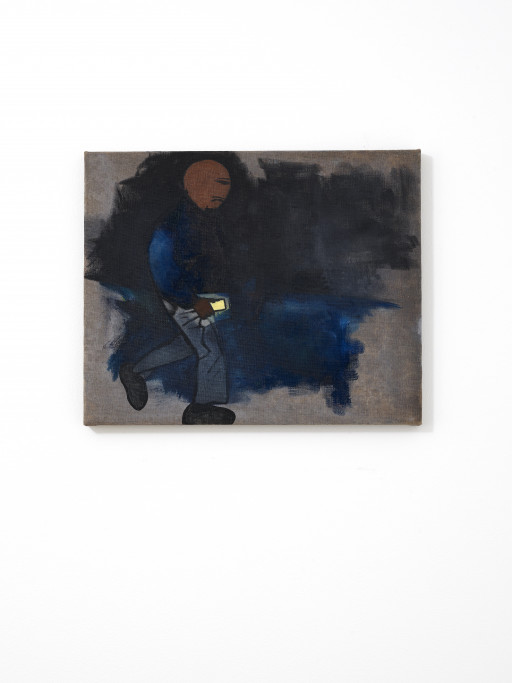In the Bayview neighborhood of San Francisco, an exhibition of new work by Los Angeles-based artist Omari Douglin is devoted to his native city of New York. Engaging painting, performance, sculpture, and their intersections, The People of New York City defines and disperses the forms, figures, and moods that characterize the respective cities in order to consider how shifting locales shape identities and artistic practices. Whether commuting within a city or migrating between them, Douglin’s subjects speak to the plurality of black identity in America as they combine, converse, and converge with their surroundings.
Schisms between cartoonish wit and painting vernaculars are stirred as the artist’s coming-of-age pop cultural references mingle with allusions to previous, though not too distant, generations of artists. As demonstrated in the exhibition title citing Blinky Palermo and Lutz Bacher, slightly altered quotations imbue Douglin’s practice with a dialectic logic. Douglin’s cultivation of conversation between other artworks forms a symbiotic exchange wherein not only is his work influenced, but Douglin’s references are retroactively informed by his artistic impulses.
Taking a speculative approach to figurative painting, Douglin inhabits the genre with a reflexive stance neither squarely critical towards nor entirely complicit with the classification’s historic hallmarks, recent relevance, and perennial popularity. Rather, space is made within past references which he fills with current politics, positions, and attitudes. Only approximating a likeness to sources of origin, Douglin proves more invested in a reference’s current translation than exhuming its previous life.
Diptychs reinforce the exhibition’s emphasis on dialogue as points of relation and departure are amplified in their pairing. Between the coupled canvases, his subjects are conduits for emotions, affected by overlapping economies that implicate a figure’s race, class, and gender. The characters pray and acquire, demand and surrender, aspire and doubt, as they negotiate what qualifies work and play, labor and game, commerce and art, value and circulation. Money trails flow and boot prints crowd weathered and muddy canvases, reverberating signifiers of Pope.L’s 1997 ATM Piece in which the artist ties himself to a Chase bank with a string of sausages wearing Timberland boots and a skirt of dollar bills.
Douglin has invited Isabel Legate to activate the exhibition with a performative response. A site-specific painting, clothing, and items found on Canal Street haunt the space as remnants from Legate’s intervention, while preserving a suspended state that’s still in flux and to be determined. By combining and challenging mediums and artistic strategies at every opportunity, the exhibition’s spirit remains improvisational, in situ, porous, and indifferent to delivering closure or conclusion.
Merging the recent past with present sensibilities, Douglin’s practice is guided by an enduring call-and-response methodology, welcoming conversation between his constellation of citations to unfold into new constellations. As styles are sampled intuitively, the multidimensional nature of subjectivity operates as a singular filter. Turning on a paradox, The People of New York City posits that multiplicity produces individuality and individuality produces multiplicity, rendering visible the universal process of discovering oneself through dynamic integration.
—Marie Heilich
